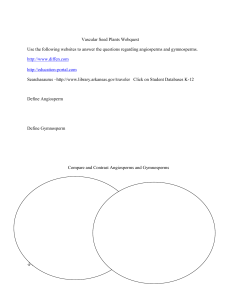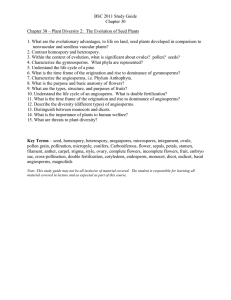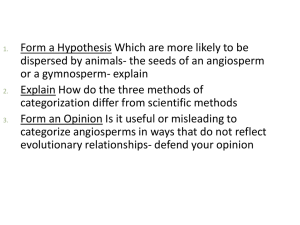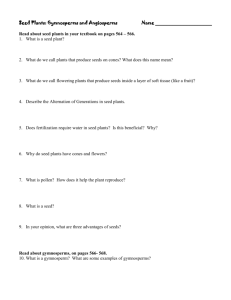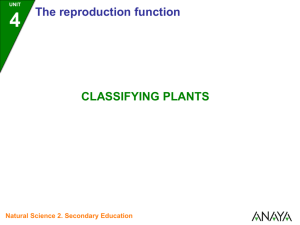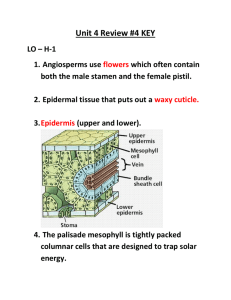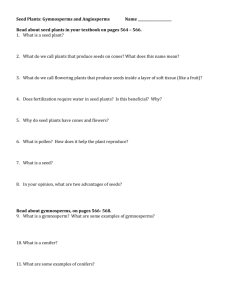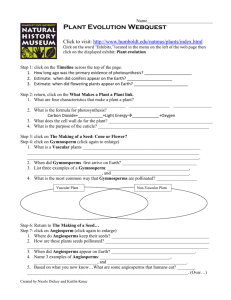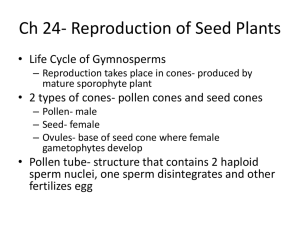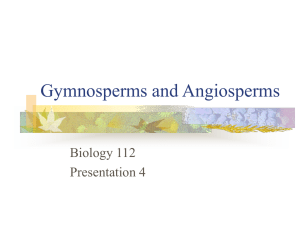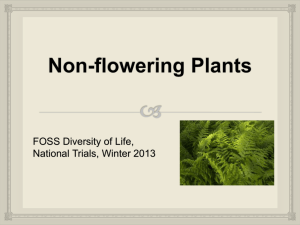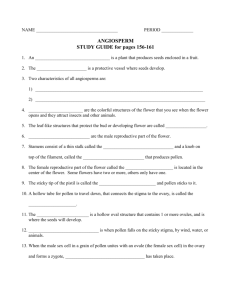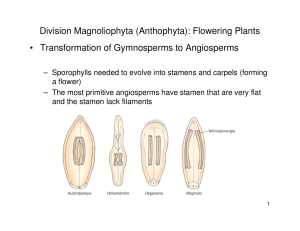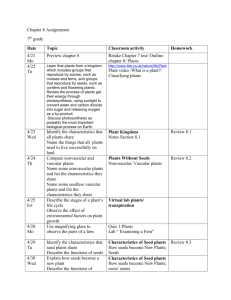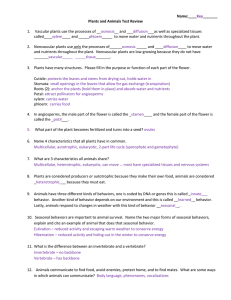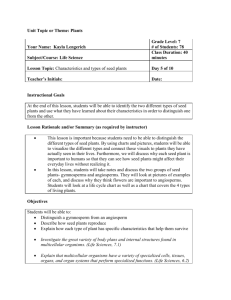What Types of Plants Produce Seeds? 1. Regarding the life cycle of
advertisement
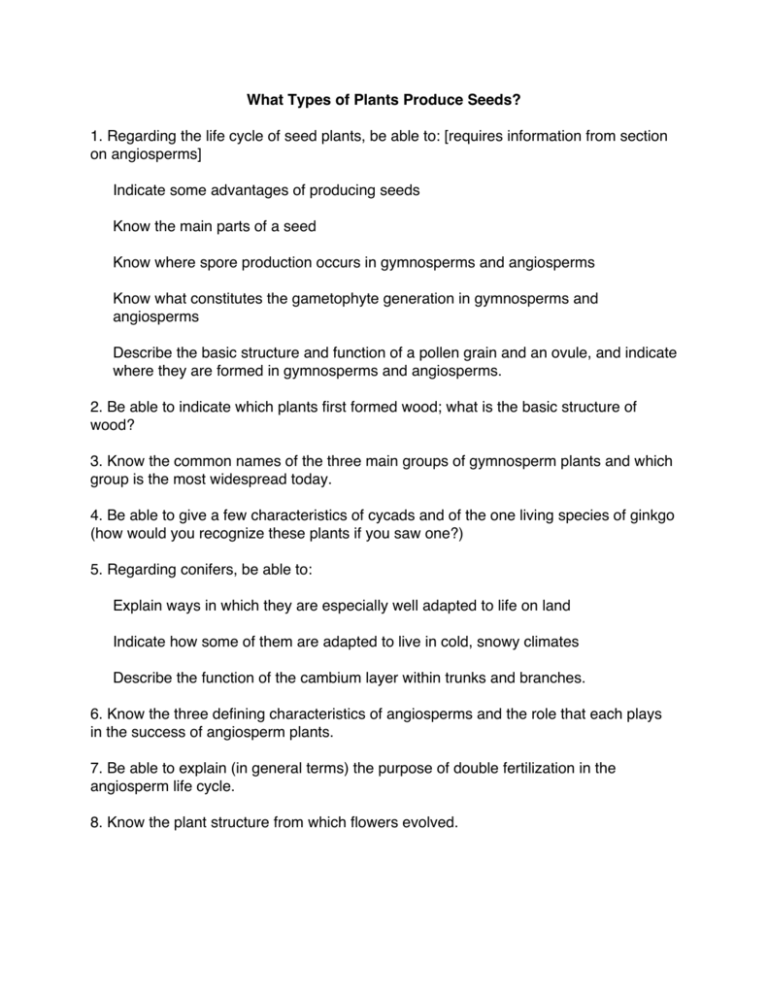
What Types of Plants Produce Seeds? 1. Regarding the life cycle of seed plants, be able to: [requires information from section on angiosperms] Indicate some advantages of producing seeds Know the main parts of a seed Know where spore production occurs in gymnosperms and angiosperms Know what constitutes the gametophyte generation in gymnosperms and angiosperms Describe the basic structure and function of a pollen grain and an ovule, and indicate where they are formed in gymnosperms and angiosperms. 2. Be able to indicate which plants first formed wood; what is the basic structure of wood? 3. Know the common names of the three main groups of gymnosperm plants and which group is the most widespread today. 4. Be able to give a few characteristics of cycads and of the one living species of ginkgo (how would you recognize these plants if you saw one?) 5. Regarding conifers, be able to: Explain ways in which they are especially well adapted to life on land Indicate how some of them are adapted to live in cold, snowy climates Describe the function of the cambium layer within trunks and branches. 6. Know the three defining characteristics of angiosperms and the role that each plays in the success of angiosperm plants. 7. Be able to explain (in general terms) the purpose of double fertilization in the angiosperm life cycle. 8. Know the plant structure from which flowers evolved. 9. Regarding flowers, be able to: draw a "typical" flower and indicate the name and function of each part know what constitutes a male flower, a female flower, and an inflorescence know which part of the flower produces seeds and fruits explain why some flowers lack petals 10. Know several ways that flowers are pollinated and several ways that seeds are dispersed. 11. Be able to compare pollination and seed dispersal in gymnosperms vs. angiosperms. 12. Know the two main features that distinguish the monocot vs. eudicot lines of angiosperm plants, and how the seedlings of each group emerge from the ground. 13. Be able to list the three types of secondary metabolites produced by angiosperms and give examples of how humans use substances from each group. 14. Be able to explain how land plants have changed earth's environment during the last 500 million years and how this, in turn, affected the evolution of plants.

